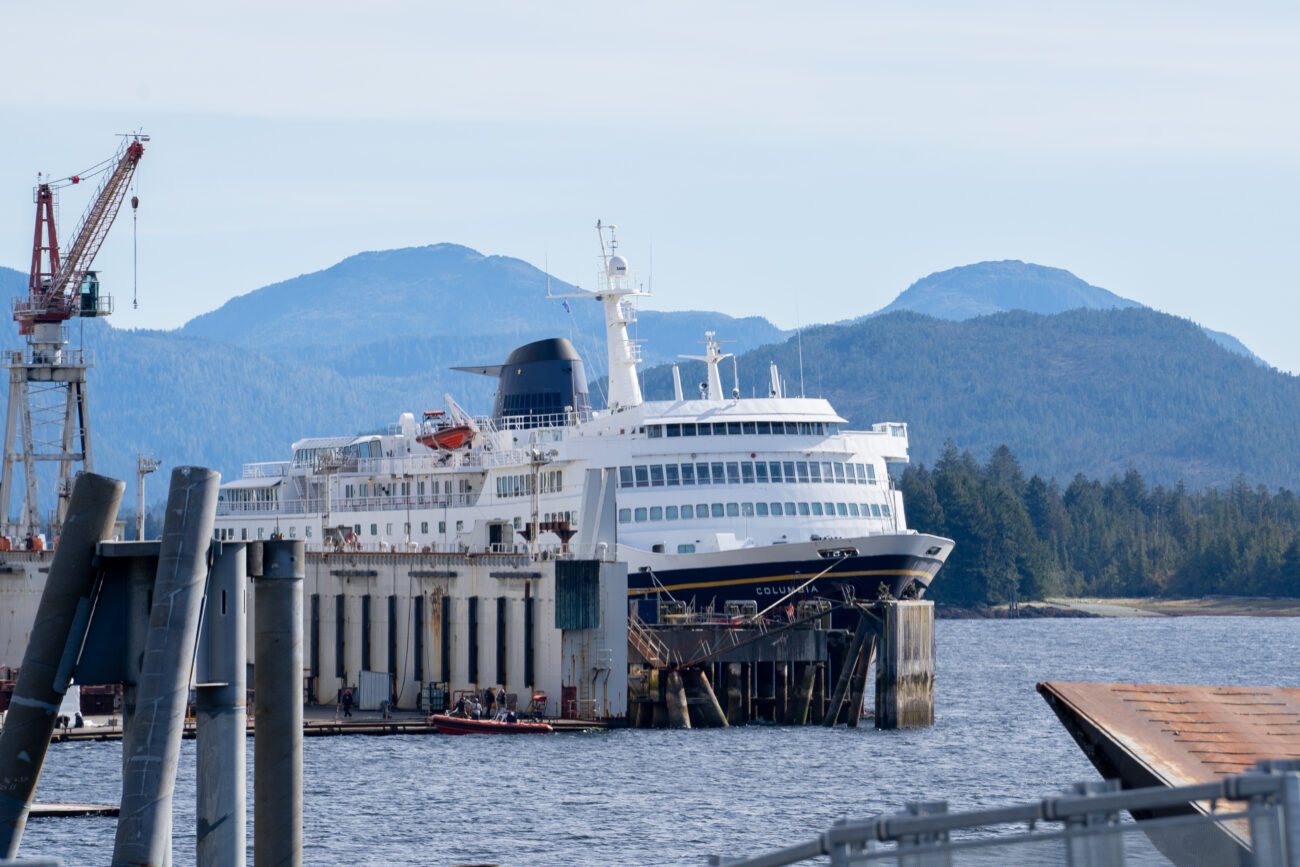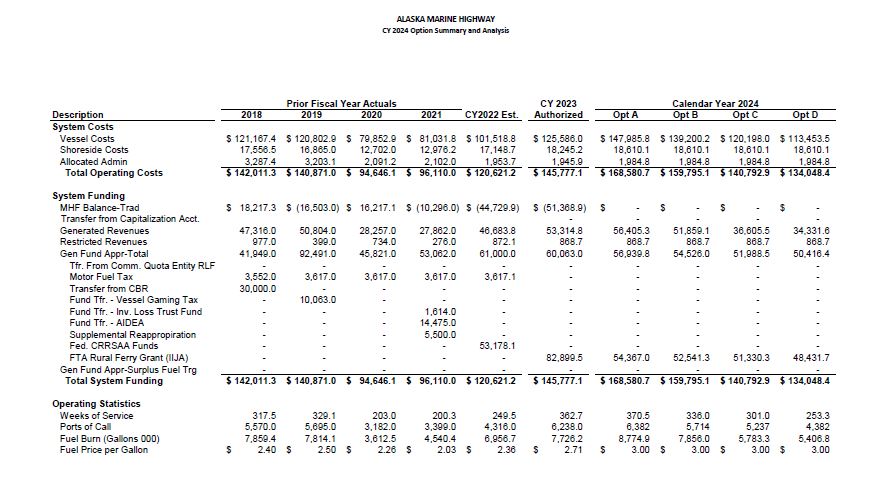
The statewide advisory board to the Alaska Marine Highway System voted Dec. 2 to spend more in 2024. But as CoastAlaska’s Angela Denning reports, labor shortages could hamstring the effort to improve service after years of cost-cutting.
The nearly $160 million approved by the Alaska Marine Highway Operations Board would allow all but one of the state’s nine ferries to sail during the busy summer tourism season. One vessel would be kept idle to fill in during maintenance layups.
The board’s unanimous vote comes ahead of the anticipated release of the governor’s proposed budget. That’ll be a starting point for lawmakers, who will consider the state’s overall spending plan when the state Legislature convenes next month.
“We’re talking an entire calendar year away before this will even be in effect,” said Rob Carpenter, Deputy Commissioner of the state’s Department of Transportation. He works closely with the ferry board.
The board’s 2024 budget recommendation is more costly than the last five years. Those budgets ranged from roughly $95 million to $142 million. It would be about $14 million more than 2023 but have 27 less service weeks.
The operations board was created by the Legislature last year to make recommendations to the marine highway system. The board has talked extensively over the past several months about the need for improvements.
“There are a lot of people, a lot of communities who feel that promises have been made with regard to the Alaska Marine Highway System, that they believe those promises have been broken,” said board member, Wanetta Ayers, at a meeting in September.
Captain Keith Hillard said at the same meeting, “The ferry system is in a very dire, dire straights right now at the moment.”
At the board’s meeting this month, they considered four operating plans for 2024, each with a different price tag and number of ferries. Plan A would have all nine vessels running, Plan D would be a reduction in service. Plan B and C were in between.

Board Chair Shirley Marquart said she supported Plan B.
“Option B I think is really justifiable in terms of going to the Legislature,” she said.
The state’s marine highway system has been suffering from a labor shortage. In February, the state contracted with a job replacement company to help hire new people. Board member, Paul Johnson, questioned whether the system would have enough staff to crew the eight vessels in Plan B.
Deputy Commissioner Carpenter was optimistic.
“We’re still aggressively pursuing all the hiring we can,” Carpenter said. “I think we have to budget or plan for [having] a full crew and then adjust as necessary when we get there.”
The board unanimously supported Plan B for the 2024 operating plan. It’s expected to have no service gaps.
The recommendation will be sent as a letter to the DOT Commissioner’s office. It will also be included in the board’s short-range plan.
Governor Mike Dunleavy has vetoed funding for the marine highway system during his tenure: $5 million in 2019, $13 million in 2020, and $8.5 million last year.











